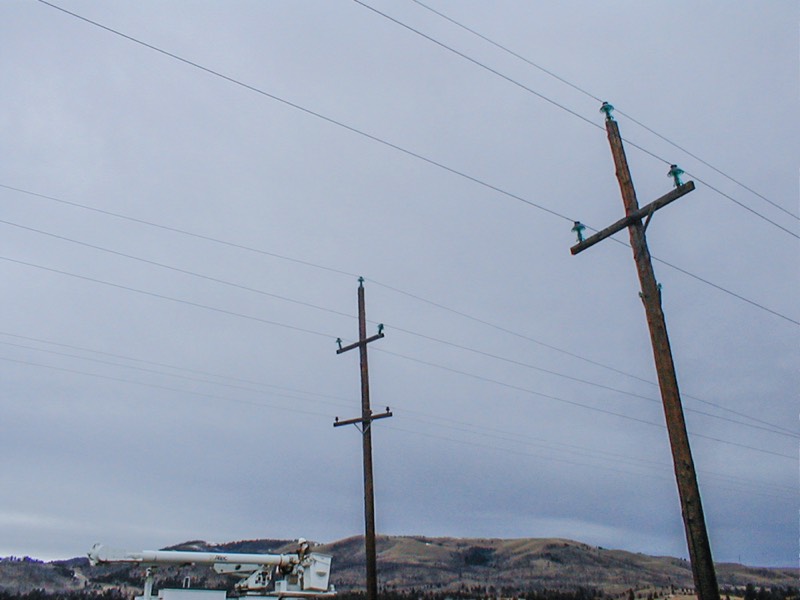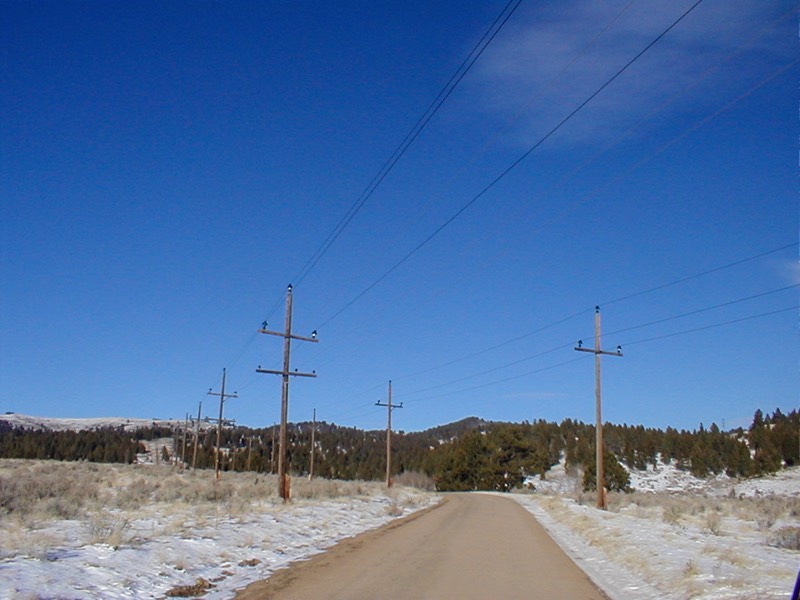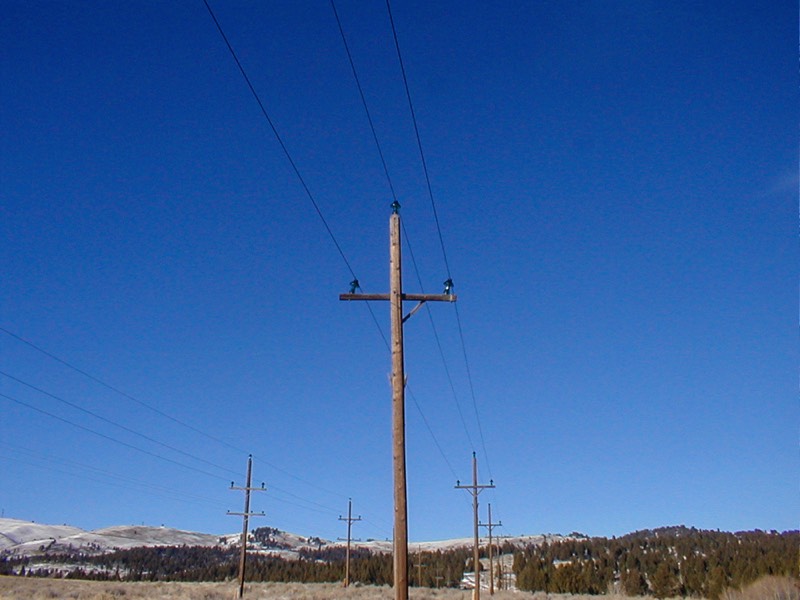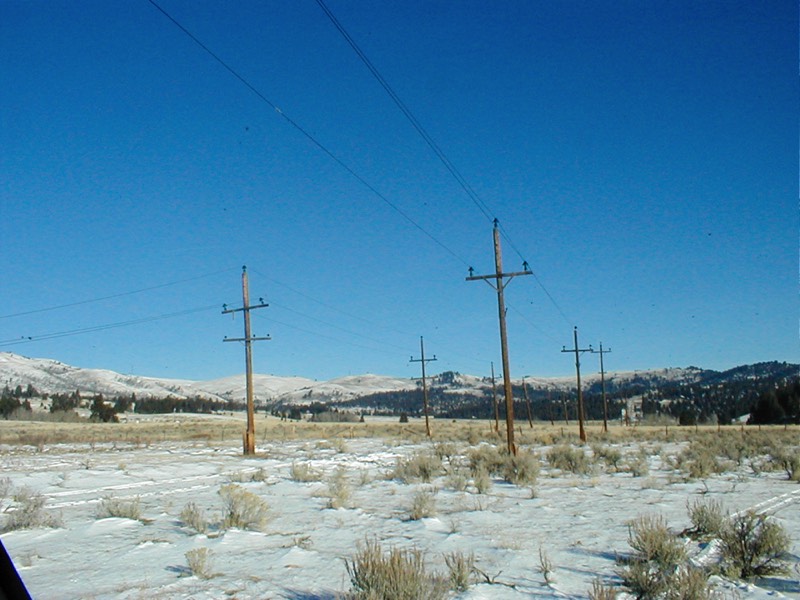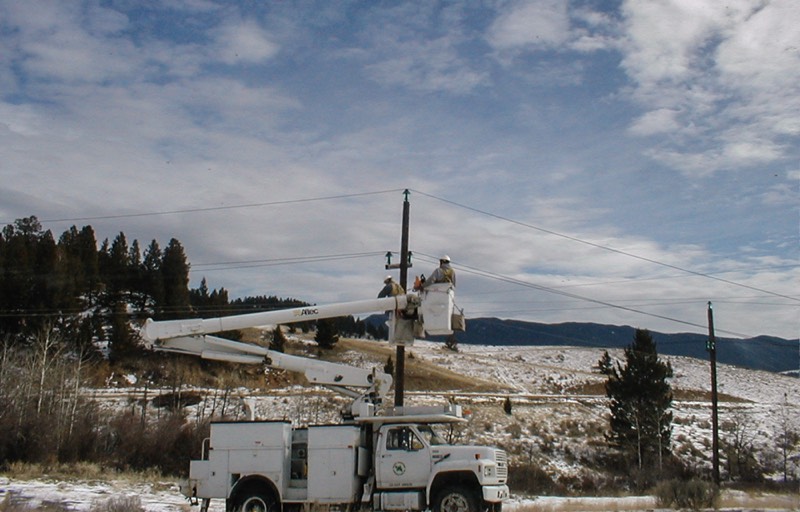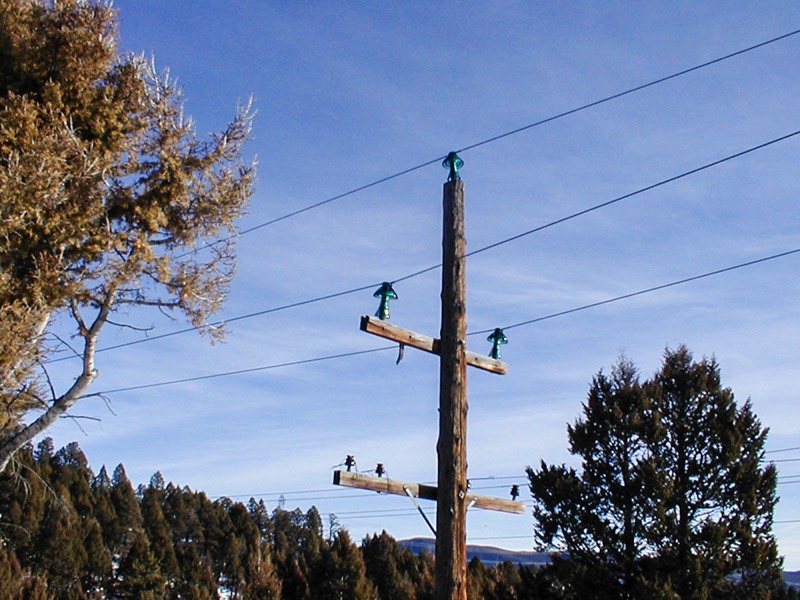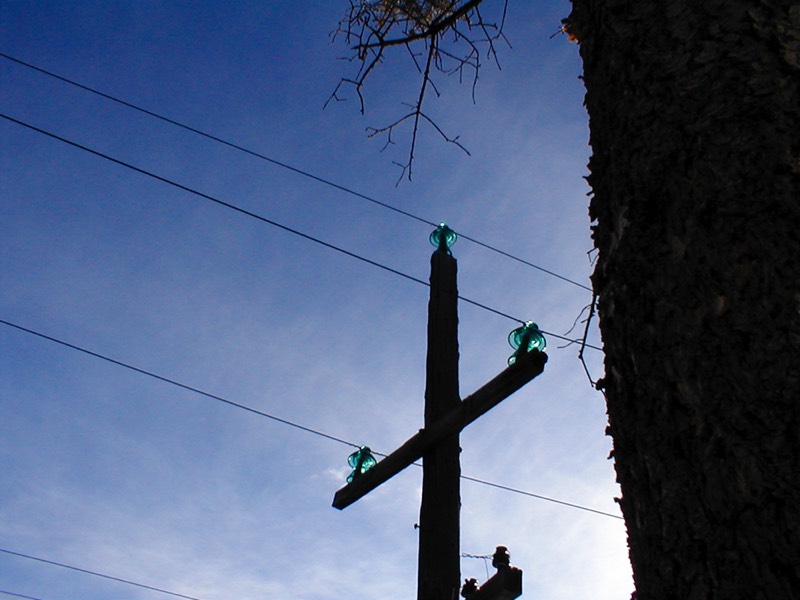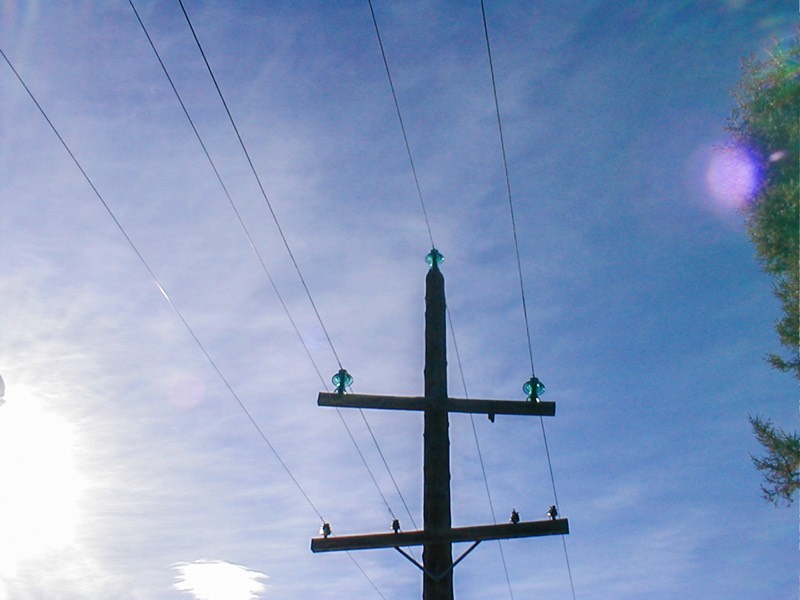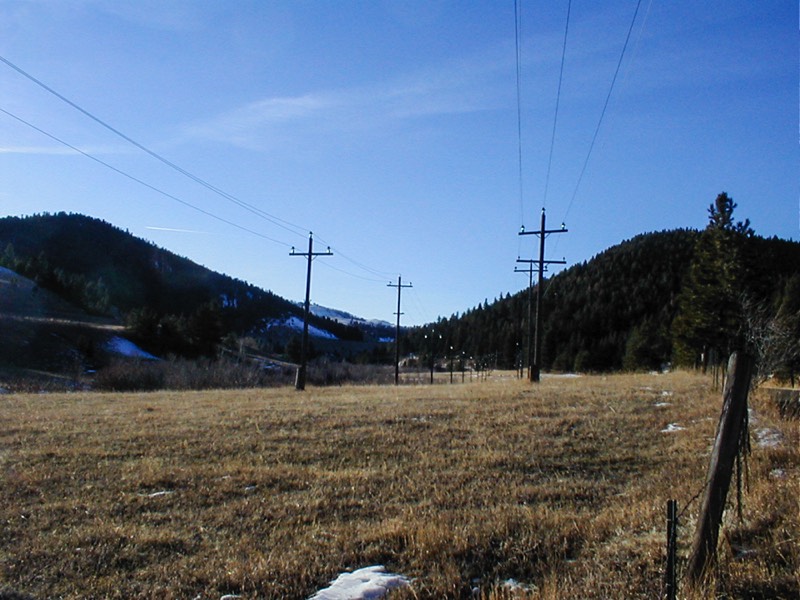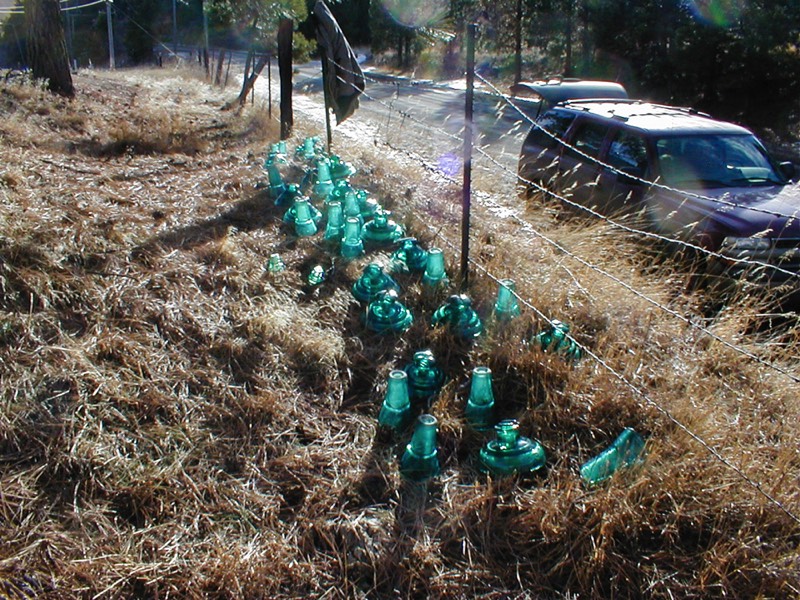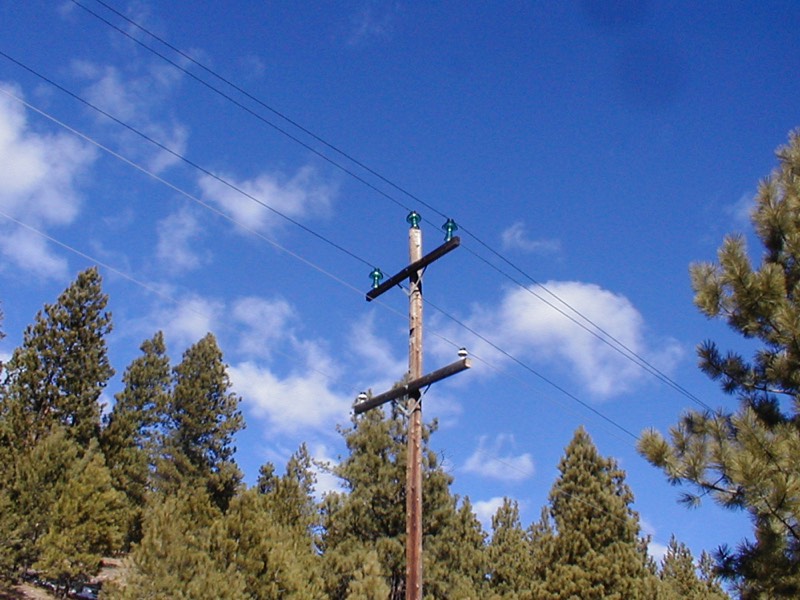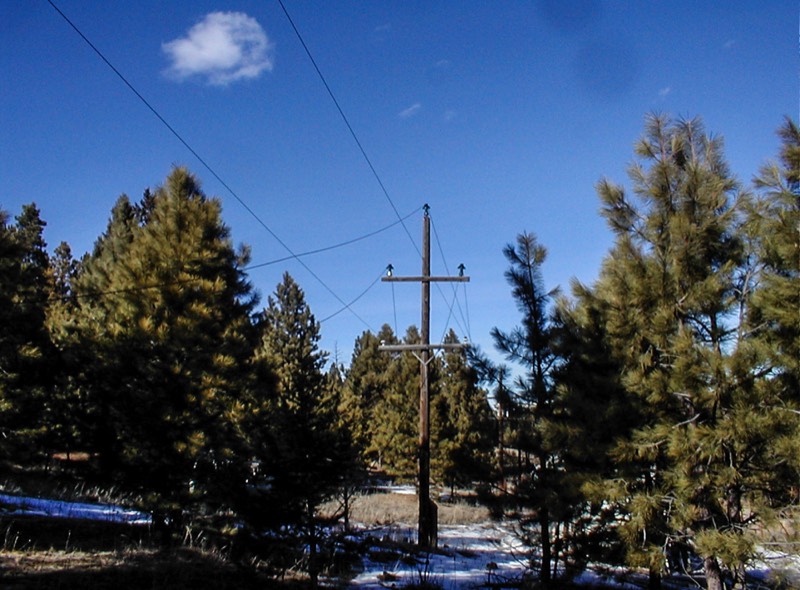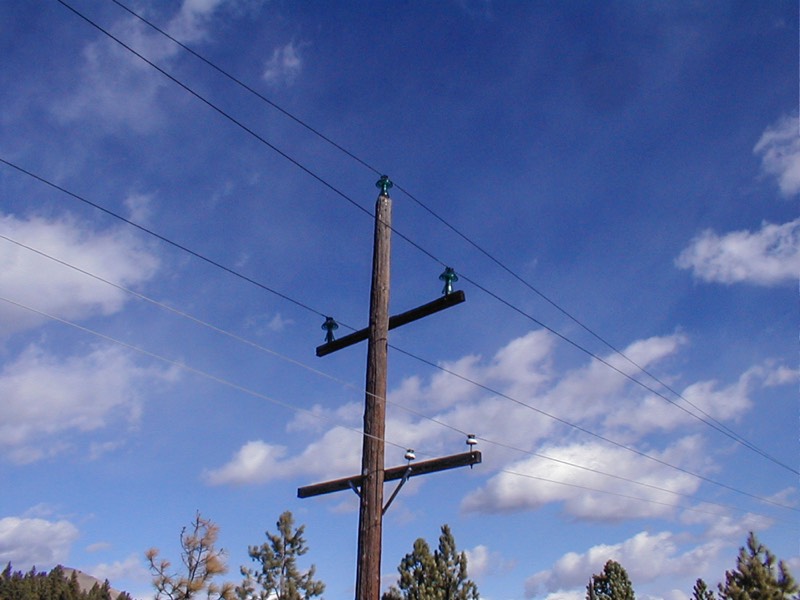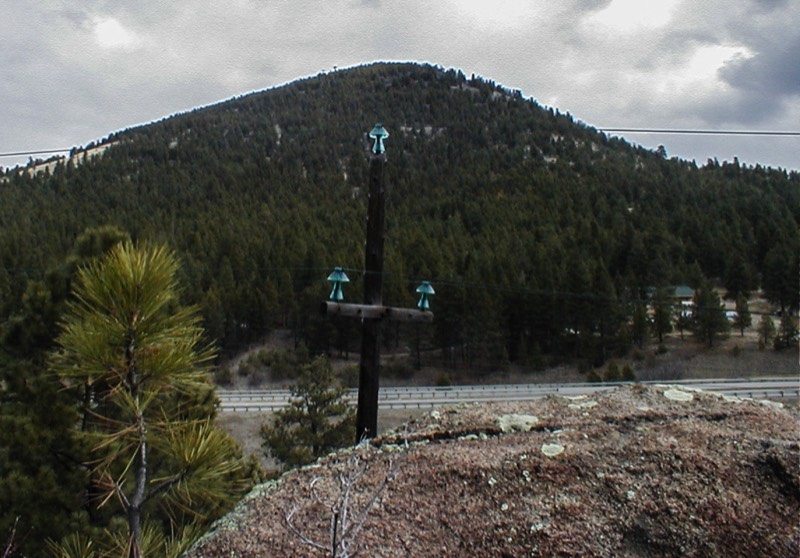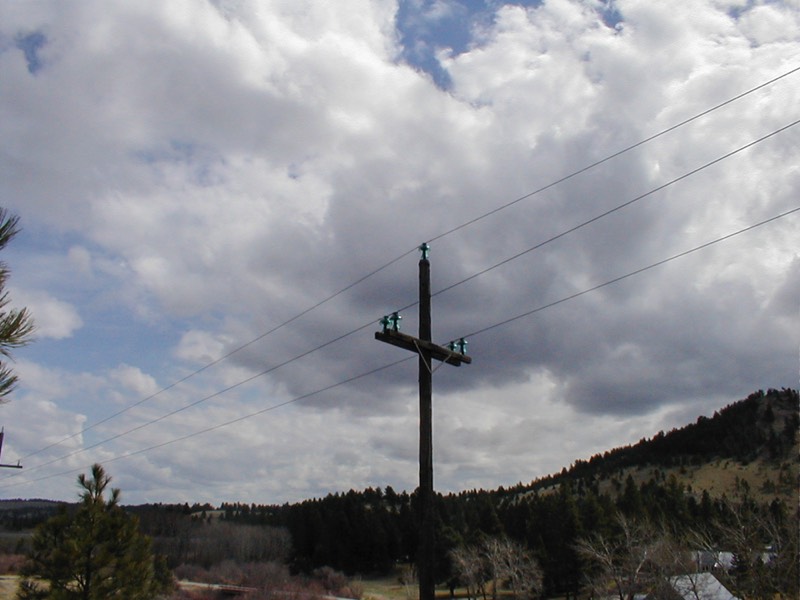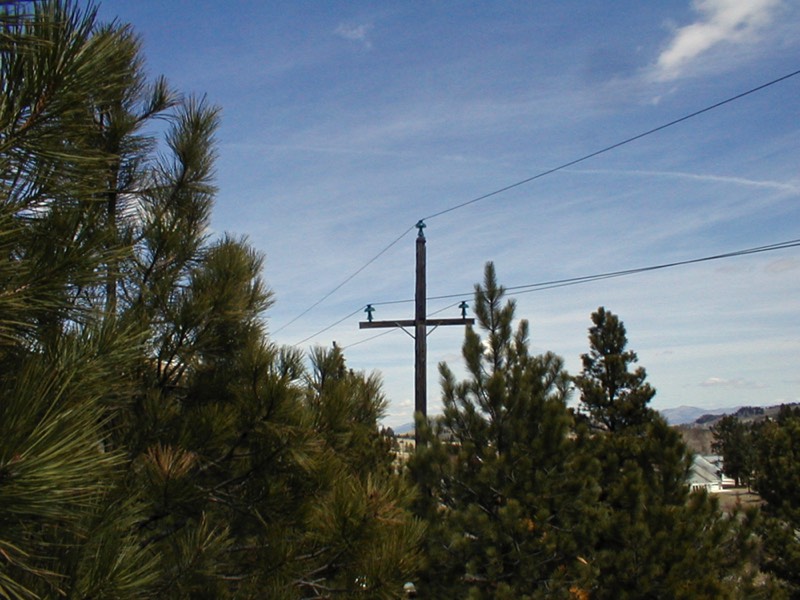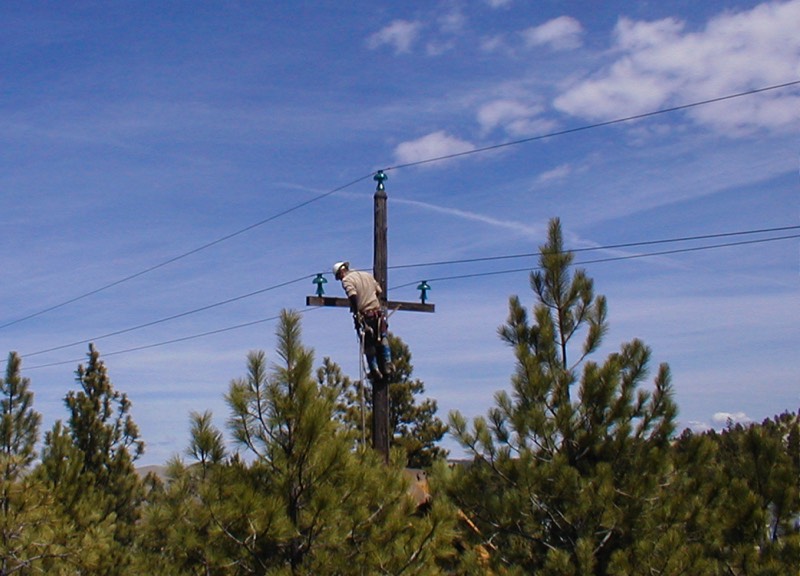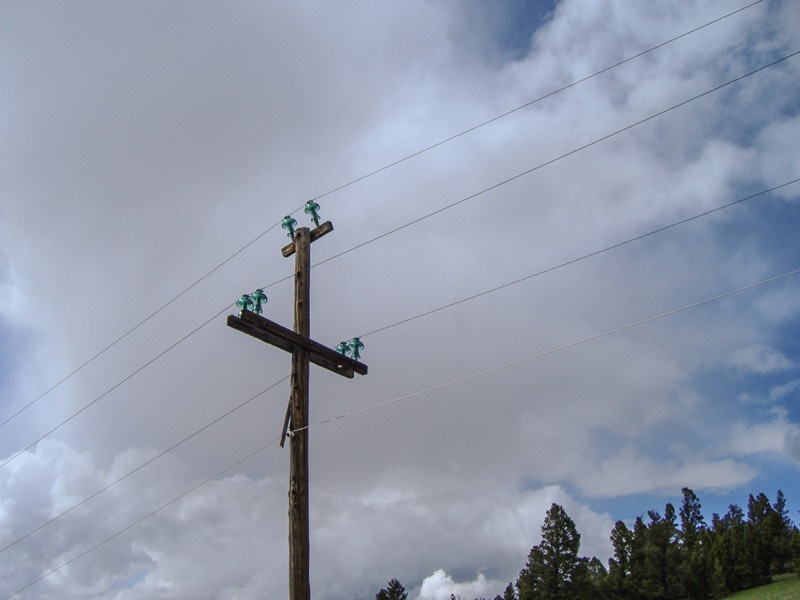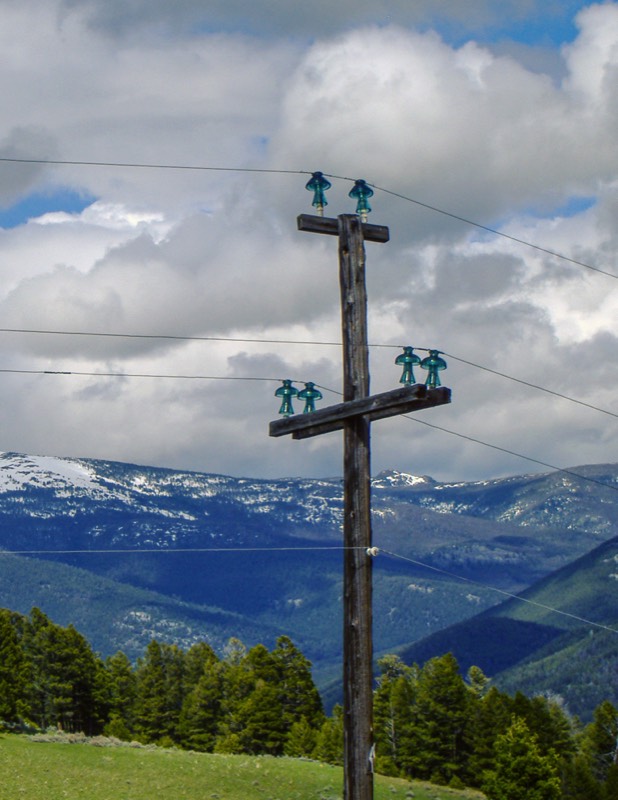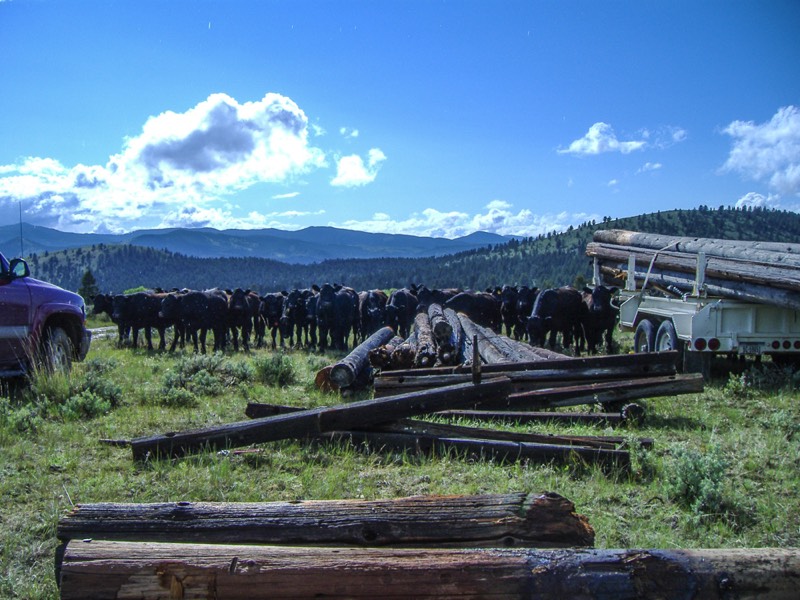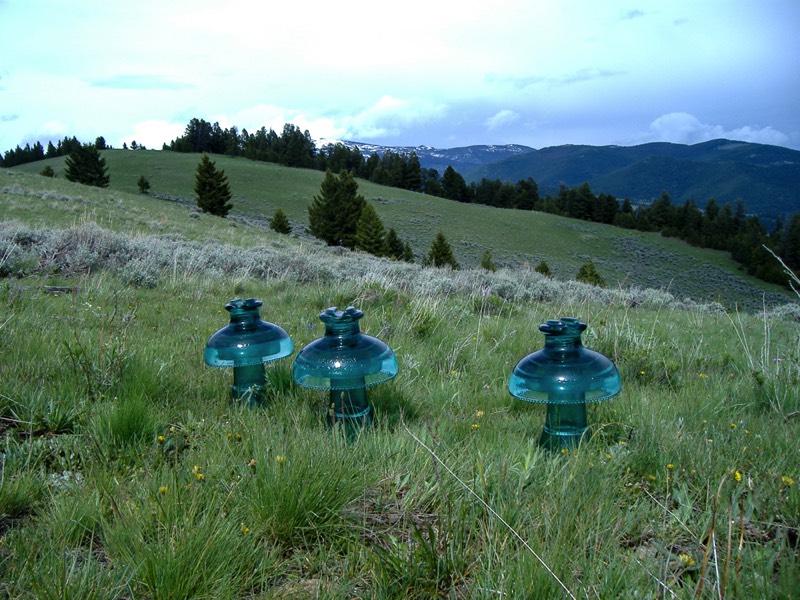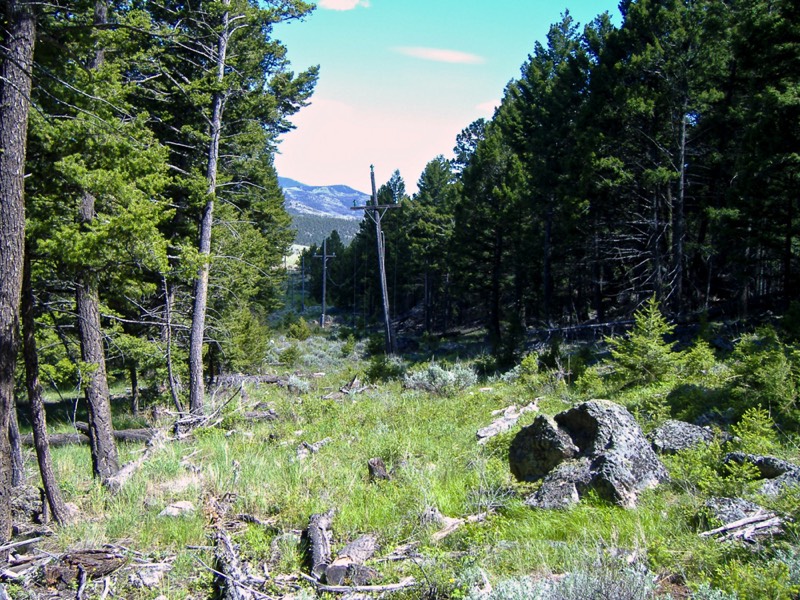
Hemingray Muncie “The Gerry Insulator”
By: Doug Rusher
One of my favorite insulators, living here in Montana I have always had a special place in my heart for the Big 2 piece power insulators that ran by my home for years delivering power to the Berkley copper mine in Butte. This line started at Canyon Ferry Dam and ran South to Butte, there were two lines that ran side by side called the Canyon Ferry feeder A and Canyon Ferry B Lines, and there were many lines tapped off of these which fed many Mines and small Mining towns along the way, like the Porphyry dyke Cochrane Line, the town of Elkhorn where Hemingray #2 provo’s were used, as well as power to Boulder and Basin Mt just to name a few:

Map showing the Canyon Ferry Feeder A & B Lines
The Design and Development of the line started in 1900, where a special glass insulator was designed by H.M Gerry Jr, chief engineer and manager of the Missouri River Power Co. and designs were sent to and made by the Hemingray Glass Co, Covington Ky. The insulator proper is a three petticoated glass 5 1⁄8” high and 9” in diameter, the special pin extending as near as possible to the wire groove below the insulator, extending up inside the inner petticoat is a tapered glass sleeve 5 ½” in diameter at its lower end , clearing the cross-arm by 1 ¼”, and supported on a 1 ¼” shoulder on the pin. The pin are all seasoned oak. Still further dried and impregnated by boiling in hot paraffin, so that pins themselves stand 100,000 Volts on test. The pins are 12” long above the butts. 1 ½” at the top of thread, which is of standard pitch, the maximum diameter is 2 ½” tapered on a 60-degree angle at the top of this butt, whose diameter is 2” for the pin which fits the cross-arm. The distance between the line cables is 18 inches. The pole lines are 40 Feet apart, and the right of way is entirely cleared of trees, etc. The poles are of Idaho Cedar, 8 inch tops, and in length from 35 to 90 feet, all poles above 75 feet being spliced.

Muncie ad from “ST. Paul & Duluth, Minn.” Exact year unknown.
Scan compliments of http:/hemingray.net

The Gerry 50,000-Volt Insulator.
In view of the completeness of the drawing and the appearance thereon of all dimensional data, a detailed description of this remarkable insulator is unnecessary, beyond stating that it, together with its tapered glass sleeve, is all glass, non-cemented. It is stated that these insulators have proven to be absolutely reliable when in operation under 50,000 volts, and that the only defect which has occurred in their design rested in the belief that it would have been better to have given more body to the walls supporting the cap of the insulator at the section of the horizontal plane of the top of the pin, where a thickness of seven-eighths of an inch is shown. This belief is held for the reason that several—probably half a dozen—caps have broken off at the point stated, which would indicate slight structural weakness at that point. Were a new lot of insulators to be ordered the only change which would be made in the specification for them would be in the direction of increased strength in the body of the insulator supporting the cap
One further notation: The ratio in which the transformers are wound is 552 1⁄2 to 50,000. The generator voltage was stated to be 630 volts, which would give a line potential of approximately 57,000 volts. The weather was clear, cold, dry and crisp.
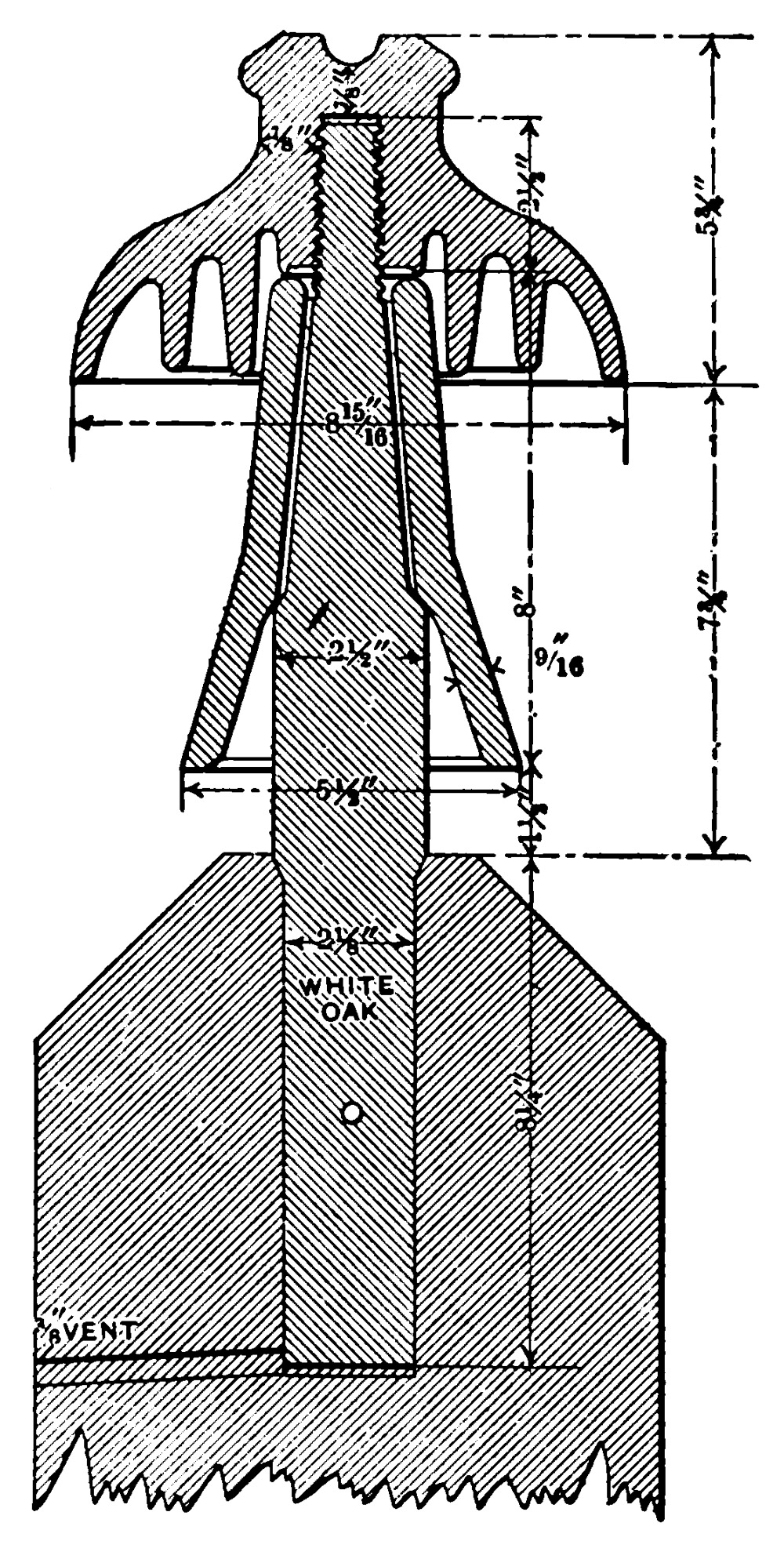
From The Journal of Electricity, Power and Gas February 1903
See the original article Here
Yes now you know where the Coolie Hat came from. The CD 304/310 had some other design changes as the body was more straight and no Neck per say, so that’s how it got its Nick Name “Coolie Hat” Notice the neck area in the following Picture.
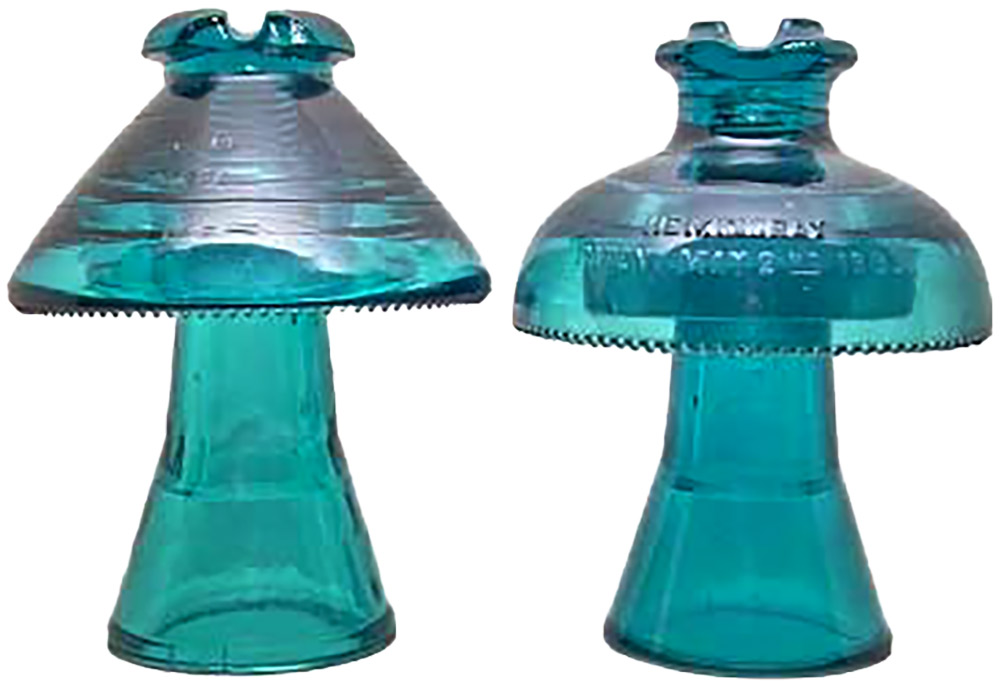
As a further illustration of current practice, the high tension lines of the Missouri River Power Company, built under the direction of the writer, are here briefly described.
This transmission has been in service for over three years, operating at 57,000 volts, delivering power at a distance of over sixty-five miles in a satisfactory manner. The country through which it passes is very rough as shown in Fig. 27.
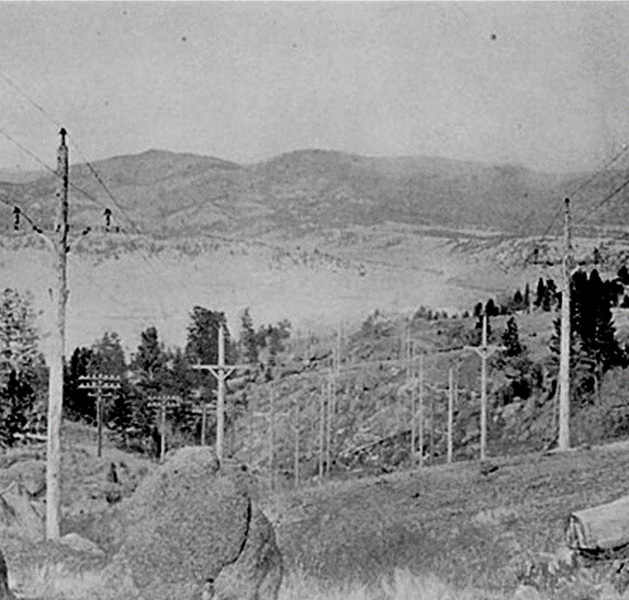

Fig. 27. and Fig. 28.- Missouri River Power Company's Transmission Lines.
The lines leave the generating station at an elevation of about 3,700 feet, pass over three distinct summits, including the Continental Divide, at which point they reach an elevation of 7,300 feet above sea level. There are two parallel lines extending from the generating station on the Missouri River to the Butte substation. They are located in the main on a private right of way 200 feet in width, from which all timber was removed. Each of the lines carries three copper cables arranged in a triangular position, seventy-eight inches apart. The cables are composed of seven strands and have an area of 106,000 circular mils. Fig. 7 illustrates the upper part of a standard pole.
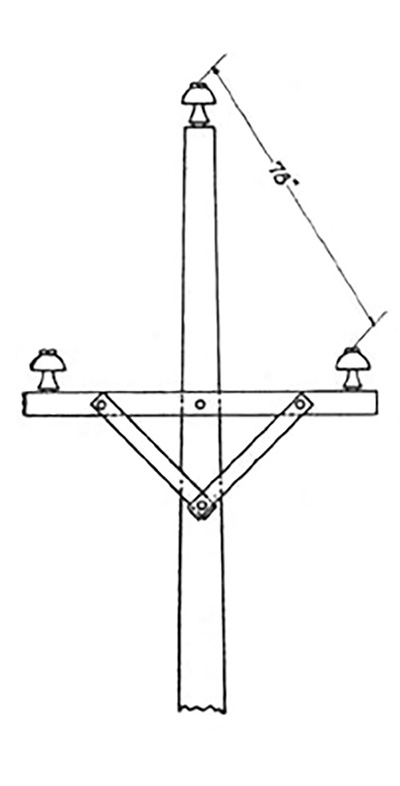
Fig. 7.- Pole Top, High-Tension Transmission Line, Missouri River Power Company.
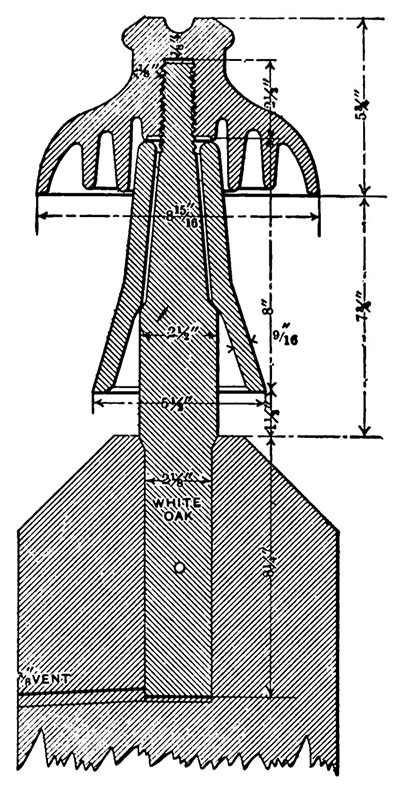
Fig. 8.- High-Tension Insulator, Sleeve, Pin and Pole Top, Missouri River Power Company.
The poles are of Idaho cedar, the cross-arms of Oregon fir, the braces and pins of white oak, and the insulators and sleeves of glass. The cross-arms, braces and pins are held in place by means of through bolts. The pins in the top of the poles are of larger size and of greater length than those in the cross-arms, to provide for the greater strains there present. The pins were prepared by being first dried and then treated in paraffine, until all moisture was removed, and were then tested to 60,000 volts.
The circuits are transposed five times, making two complete turns between the generating station and the substation. The switching arrangements are such that the circuits may be operated either singly or in multiple. A telephone circuit is located on one of the lines and gives good results in service. The poles are from thirty-five to seventy-five feet in length, and the pole-tops are from nine to twelve inches in diameter. The poles are set from six to eight feet in the ground, according to height, and the standard spacing is one hundred and ten feet, with a maximum spacing of one hundred and fifty feet, when required by the nature of the ground. Fig. 28 shows the lines through timbered country.
The constructions just described were selected as typical examples of what has been accomplished in the building of high tension transmissions. Several of the lines mentioned have been in regular operation for periods varying from one to three years, and are in no sense experiments, but rather represent successful commercial undertakings. Other interesting and well-known systems might have been described had the limits of this paper permitted a further expansion of the subject.
We are now to the point of considering the very highest-voltage insulators—those which are in use for voltages from 50,000 to 60,000. Fig. 8 shows a glass insulator used by the Missouri River Power Company in Montana, for 55,000 volts. This insulator has been in service since 1901. The insulator is in two parts, one a hood 9 in. in diameter, and the other a sleeve set over the pin. The sleeve, which is open at the top, adds nothing to the dielectric strength of the insulator, its purpose being to protect the wooden pin. Obviously the sleeve would be of little value if a metal pin were used. This type of insulator possesses the advantage of being in two parts which are separable, either of which can be replaced if broken.
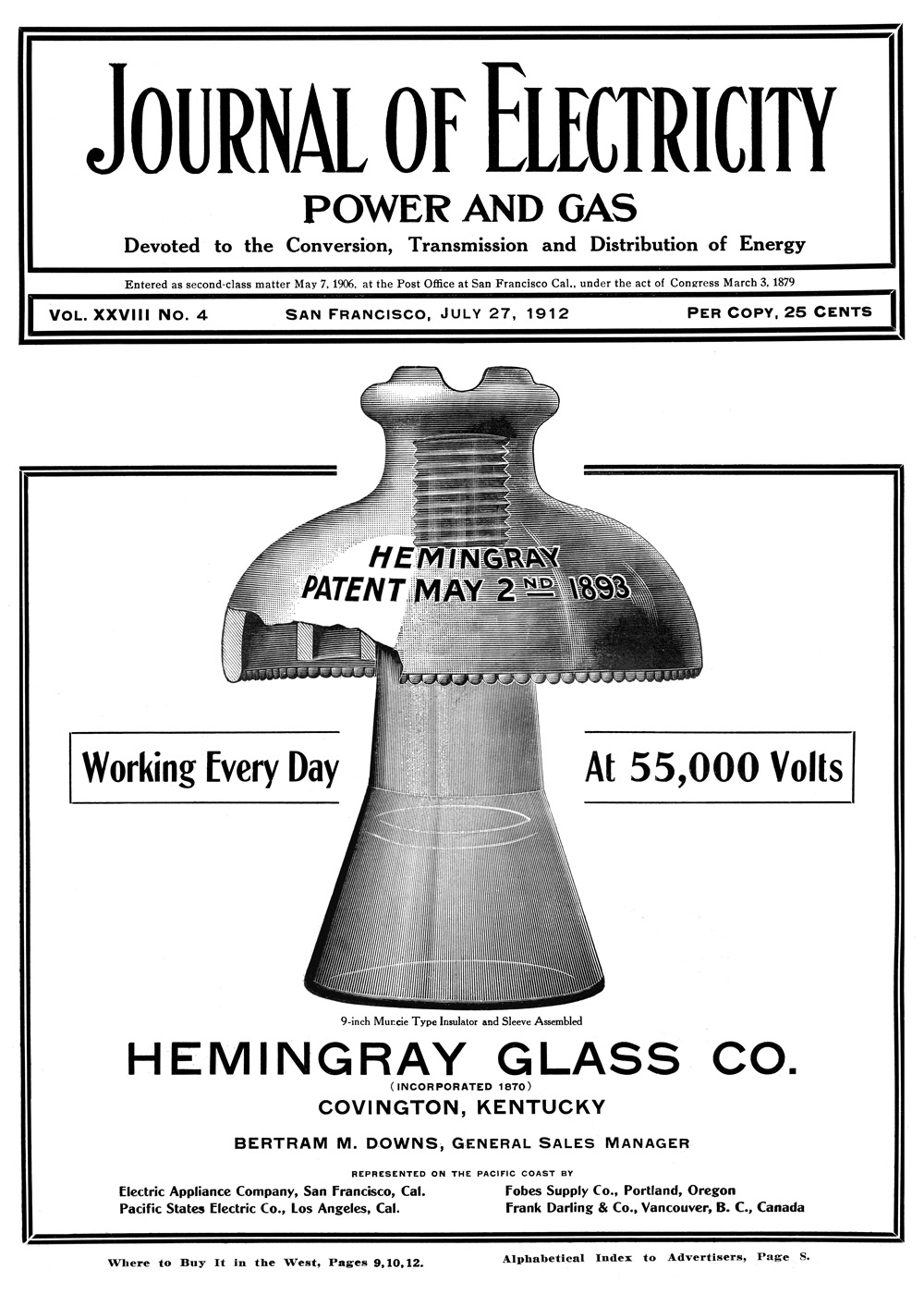
Here is a Great Ad Thanks to Elton Gish from Hemingray on the Muncie
The Hemingray Muncie, Hemingray No76 or Gerry Insulator was primarily used in Montana but a very few found their way to different states. Recently, Shaun Kotlarsky and Mike Spadafora found a line in Michigan that supplied power to a Trolley line that used Hemingray Muncies.
A few found their way out to Washington State and were used to supply power into Seattle, Thanks to Mike Spadafora for his digging into the WA state archives and finding this information.
This picture was taken around 1904 when the City of Seattle was building the Ceder River powerhouse. The 44 kV pole line in the background was the main line to Seattle that ran along the aqueduct water line from the power plant to Seattle . This line was the first Seattle City Light transmission line. Robin Harison mentioned to me once that early collectors as well as lineman remember seeing large Muncies without bases in service in Seattle in the 1950's and 1960's. These were likely the original Ceder River insulators that were removed in 1907 and later reused in distribution service in Seattle. Sadly no pretty aqua-blue glass Muncies have survived to adorn the poles of Seattle today. Ed Sewell found a whole Muncie top and several more broken ones on a hill above the powerhouse in 1999.
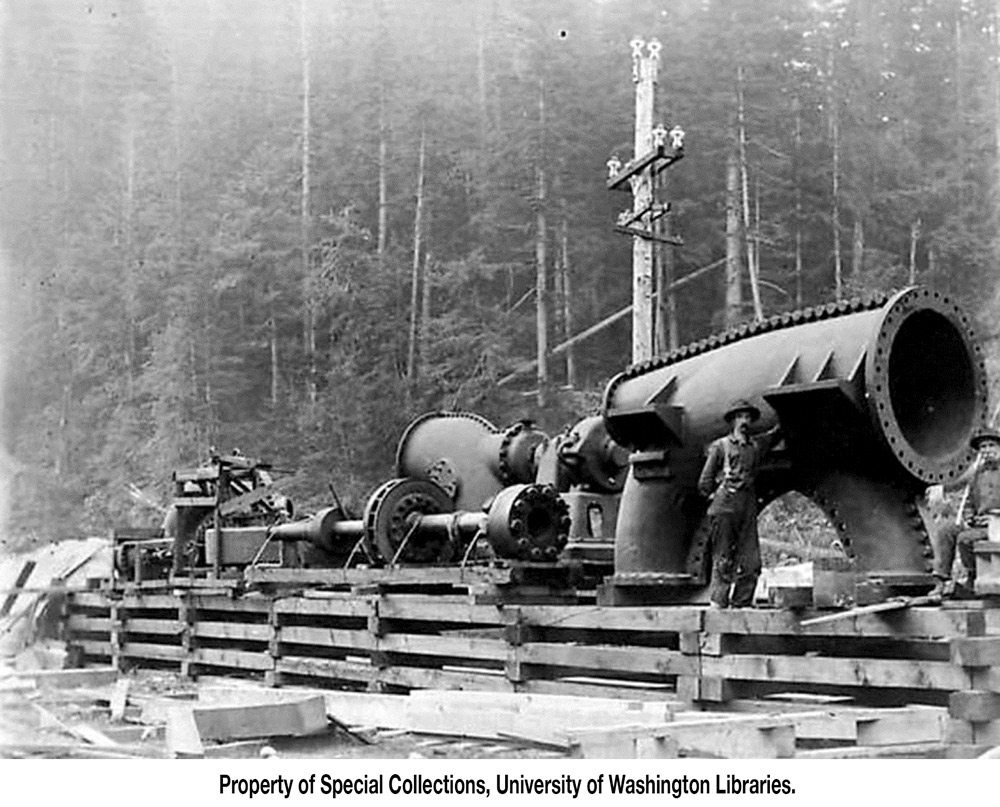

Here is a photograph dated 1987 of Bill Burger digging an outhouse pit that was temporarily not under water due to a drought that year. Rattle Snake Lake is a man made lake in Western Washington in the Cascade Mountains just south of North Bend. This pit and many others at the bottom of this lake were loaded with mostly broken Hemingray Muncies. Note the Muncie top directly below Bill in the mud pile.
Electrical Review April 11, 1903
THE HEMINGRAY GLASS COMPANY, Covington, Ky., with factories at Muncie, Ind., recently received the following letter from the Missouri River Power Company at Helena, Mont., Written by M. H. Gerry, Jr., general manager, which is a remarkable tribute to the excellence of the company's type of insulator: "We are at present running the highest voltage in commercial circles, and are carrying a very large and important load, at a distance of sixty five miles from our power-house, with practically no line trouble whatsoever. These high-voltage transmission lines are equipped entirely with your insulators, and are giving excellent satisfaction, and are demonstrating daily the practicability of transmitting power at voltages of 55,000 and over.
Michigan Muncies
Shaun Kotlarsky and Mike Spadafora did some major hunting in Michigan and made a Great Discovery, they found a Old trolly line that used Muncies with the CD310 Base and Special Oak Pin, here’s a little info on it, the electric power for the road came from the Kalamazoo valley electric company who built tree dams on the Kalamazoo river. The first was Towbridge, completed in the 1899, the second was Plainwell in 1902, and the third pine creek (Otsego) in 1903.
The 1899 Trowbridge-Battle Creek via Kalamazoo transmission line used Hemingray Provo insulators and it is likely upgrades and new lines to incorporate Painwell (1902) and Pine Creek (1903) also used Hemingray provo types.
The traction line between Battle Creek and Jackson was completed in 1903. Several specimens of insulators have been found on the ROW. Both Hemingray Muncie and Provo have been found along with various porcelain insulators.
The line was discontinued in 1928 with track and cars sold for scrap shortly after closing.
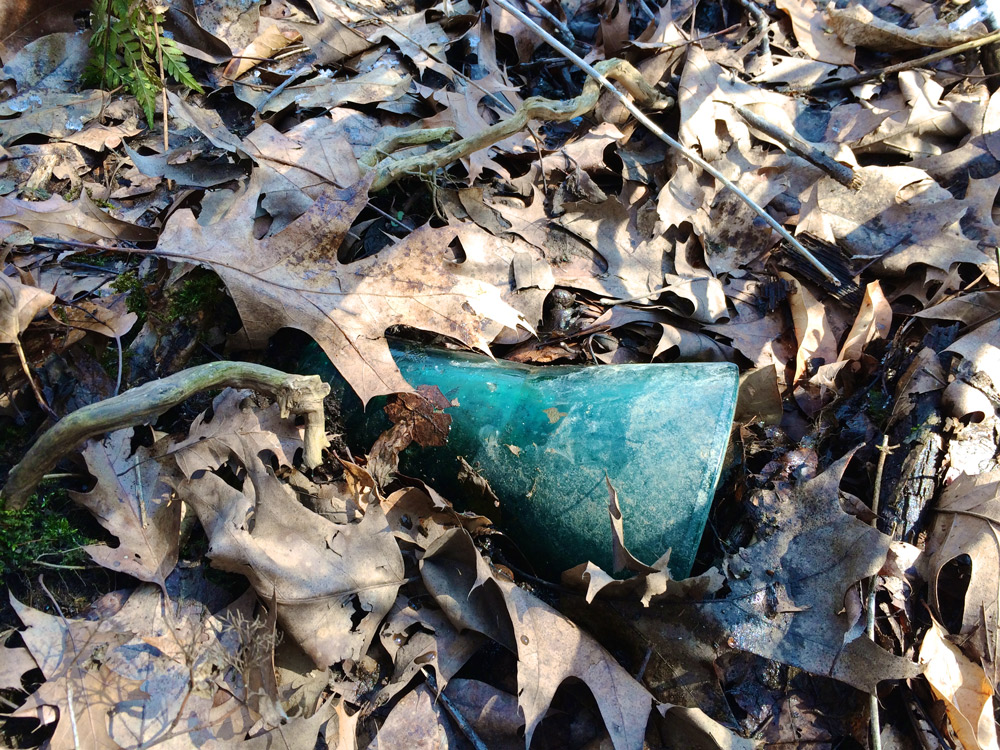
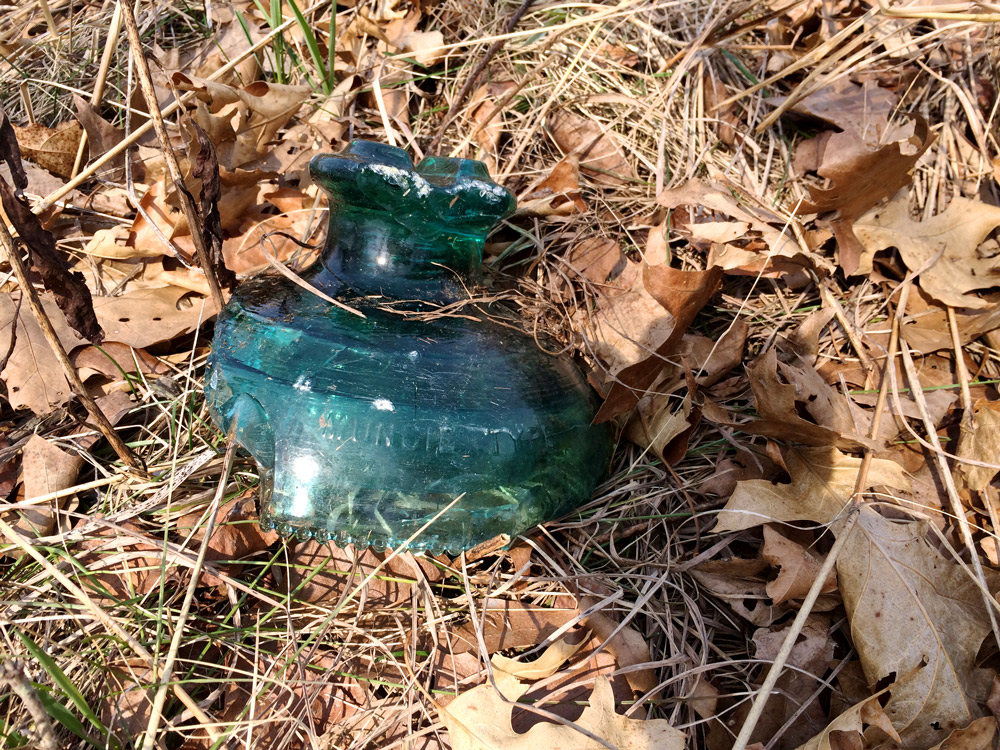
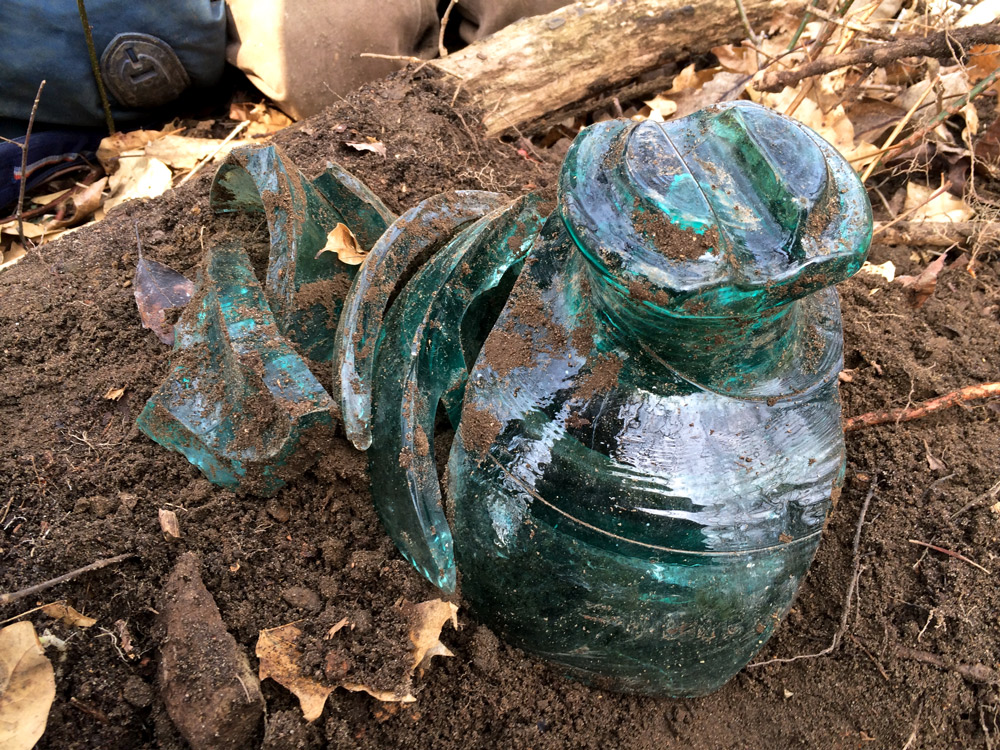

Muncie Colors and Markings
CD 303 and CD 310 do come in a variety of colors and shades ranging from aqua to Hemingray blue to green and shades of a aqua teal blue. As far as markings, the most common is the good old Muncie Type, to the less Common No 76 to the very rare no name.
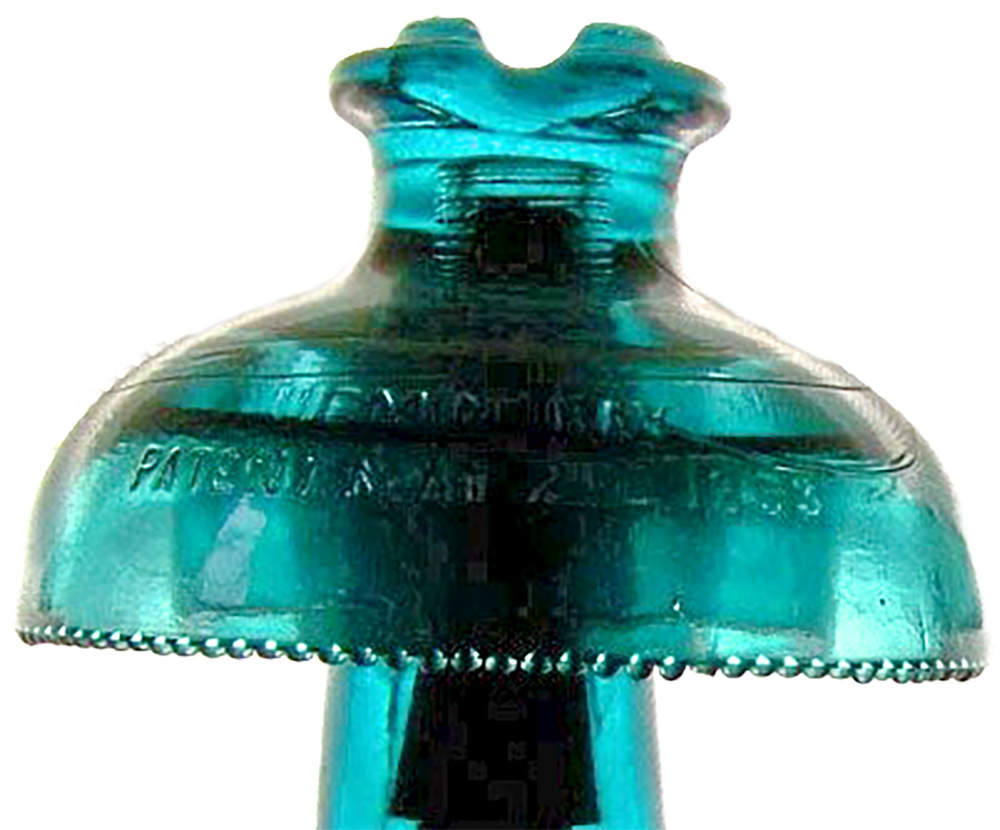
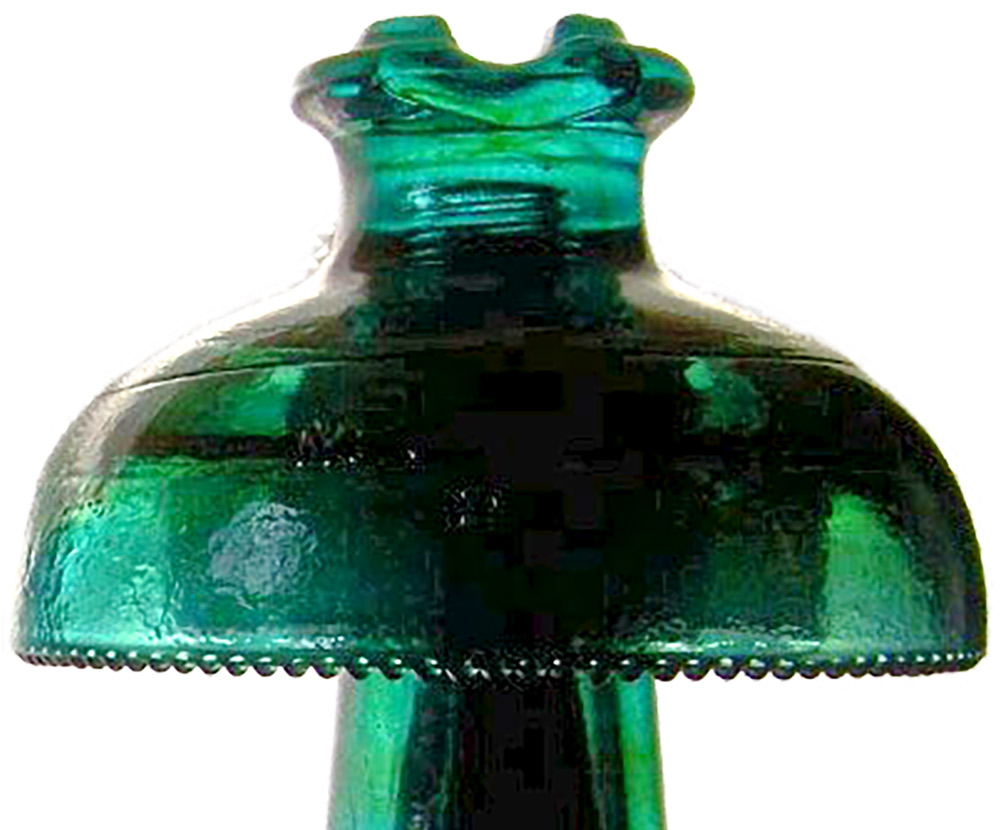
Here is a Hemingray Blue on the left a Green with amber swirls on the right
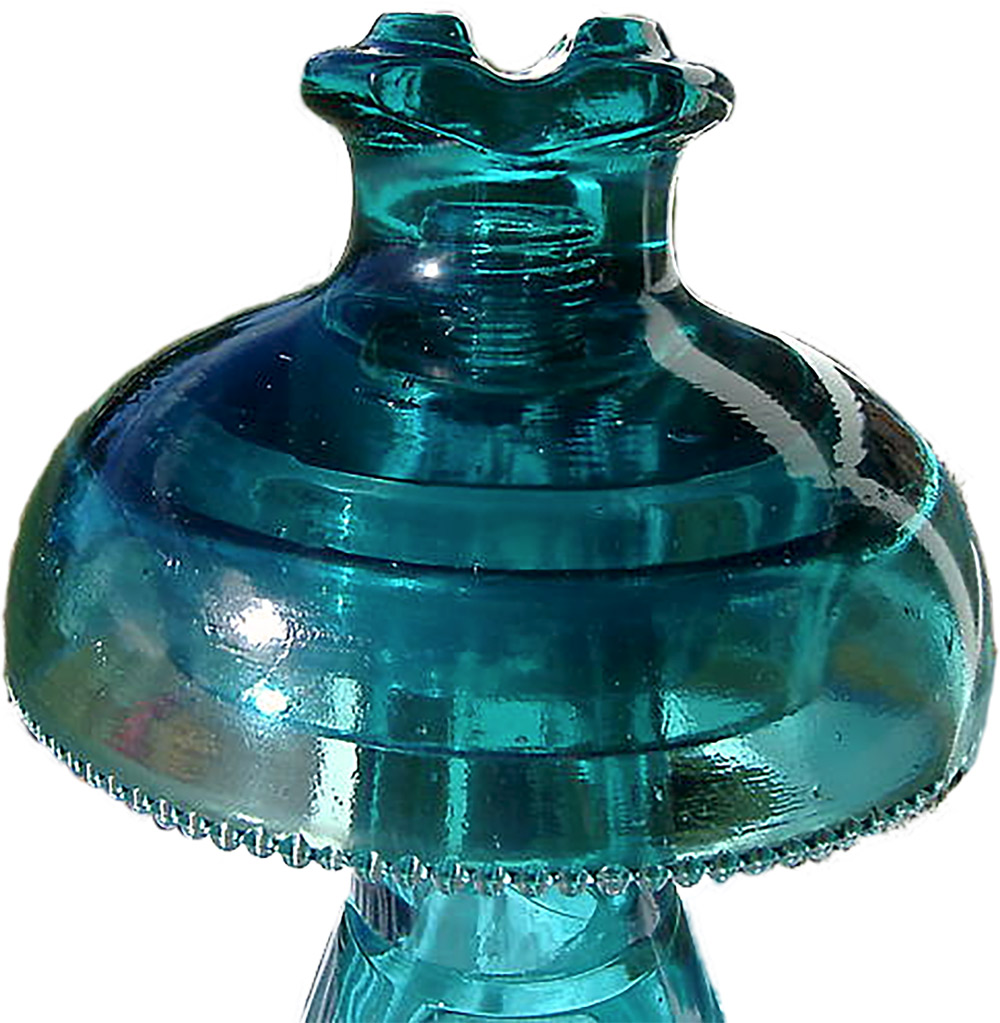
The Very Rare No Name Muncie
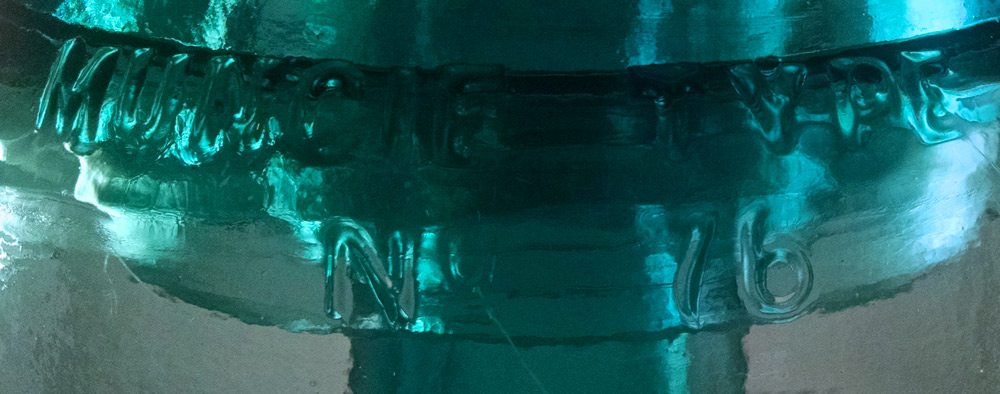
No 76 Marking
Diorama Depicting Installation of First High Voltage Power Line.
From the July 4th 1954 Helena Independent Record News Paper.
Depicting Installation of First High Voltage Power Line. Visitors to the Veterans’ and Pioneers’ Memorial building may now view the latest diorama, which depicts the coming of electrical power to Montana.
K. Ross Toole, director of the Historical Society of Montana, said. “The attractive diorama has been constructed during the past two months by Irvin S. (Shorty) Shope, Helena artist, with funds provided by Montana Power Company. It is located at the far end of the museum in the corner at the right of the planned Lewis and Clark diorama. Shope, assisted by H. K. Dickinson of Montana Power. and C. A. Bernier, one of the company’s old time employees, did considerable research into the early methods of stringing electrical wires before he started the work.
The scene is south of Helena, where the first power lines in Montana were strung with horse and wagon about 1902. The lines carried power from the old Hauser lake and Canyon Ferry dams to the Elkhorn and Butte mining centers.
The establishment of electrical power in Montana through those dams was one of the most important steps in forwarding Montana industry and economy,” Shope said.
“It’s a romantic story in its rancher-cowboy type, wears fanner work clothes and a big hat. The man up the pole dropping the round line wears a wool cap, and the third man, kneeling beside the wagon, wears a hat with four dents and work clothes. The team of horses, first to be modeled by Shope,who specializes in oil paintings of horses, are perfect in every detail; including the miniature blinders on the bridles. They were modeled of tythetic wax and painted. A Irvin Hayes of Helena, office manager of the bridge department of the highway department, made the harness, insulators and some parts of the wagon bed. The wagon obtains spools of copper wire mounted on a crow bar, which rests on miniature sawhorses. There are wood planks on the ground near the interpretation. One was used to brake the spools when the wire ran too freely and the other was used as an extra seat for the third passenger. ”

The line was part of one of the first high voltage transmission lines in the United States, Dickinson said Saturday. Shope’s spectacular diorama depicts three men, a team of horses and wagon stringing the copper wires on cedar poles along the Jefferson river valley with the Spanish peaks in the background. The route taken by these men installing the line almost follows the present road to Butte, the artist said.
The Painting-Diorama now resides in the Broadwater Historical Museum in Townsend MT, which has some really great displays so if you come to Montana on Vacation, I recommend that you check it out.
Thanks - Doug Rusher
See the original article as it appeared in Spring 2015 Drip Points Magazine.
Share this page on:
Like or Follow on Facebook:
